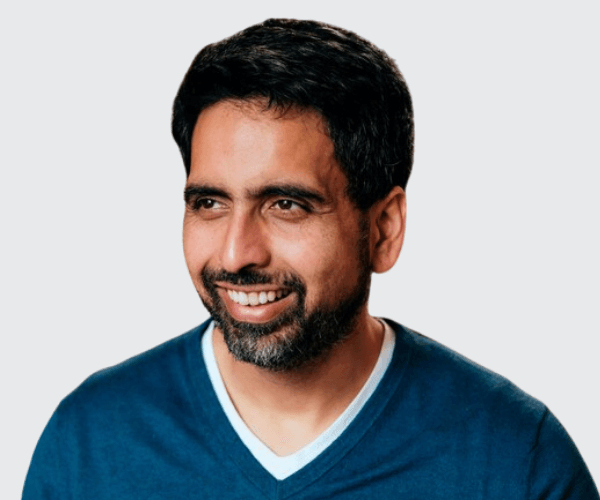Sal Khan is the founder and CEO of Khan Academy, a nonprofit that aims to provide a free, world-class education for anyone, anywhere. He is also the founder of Schoolhouse. world, Khan Lab School, and Khan World School, all nonprofits focused on making world-class, personalized mastery education accessible. Sal’s interest in education began while he was an undergraduate at MIT. He developed math software for children with ADHD and tutored fourth- and seventh-grade public school students in Boston. He holds three degrees from MIT and an MBA from Harvard Business School.
Salman ‘Sal’ Khan, graduated from MIT and Harvard Business School in 2003. Following an internship at PARC, he ventured into the finance world as a hedge fund analyst, expressing his ambition to his friends, saying, “I’m going to do this long enough so I can become independently wealthy.”
Around the same time, Khan began tutoring his young cousin Nadia in math over the phone. He started enjoying the process and soon started helping more of his extended family and friends with various subjects, recording his lessons and posting them on YouTube to aid their learning.
His friends were amazed by Khan’s unique teaching style and ability to explain complex concepts in a simplified manner. They encouraged him to keep making the videos, sensing he had found a real passion. Seeing the incredible impact his videos were having, Khan decided to leave his job in finance to pursue this passion full-time.
A Billionaire’s Recognition: How Bill Gates and Ann Doerr Changed the Game
Khan then started living off savings with his family while trying to get Khan Academy off the ground. He recounts, “I think anytime you do anything entrepreneurial for-profit or nonprofit, you have to start with that delusional optimism.” But after nine stressful months of digging into savings, a $10,000 donation came from Ann Doerr.
He says, “Ann wanted to learn more, so we met for lunch, and she asked me about my goals. I replied, I want to provide free, world-class education for anyone anywhere. To that, Ann replied, how have you supported yourself? And I proudly stated that I have not.” He continues, “She paid the bill, and then 10 minutes later, I get a text message from Ann saying, ‘You really need to be supporting yourself. I just wired you $100,000.’
A few months later, Khan received a text from Ann while running a summer camp, saying Bill Gates had mentioned Khan Academy on stage. Khan recounts: “I was like, ‘Is this really happening?’ I remember that night showing my wife and asking, ‘What do I do now? Do I call him up?'”
Within two weeks, Gates’ chief of staff called him and offered to fly him to Seattle. Khan recalls his excitement on the call, saying, “Yeah, sure. I’ve got to cut my nails next Wednesday, but I’m happy to meet with Bill.” After the meeting, significant funding soon followed from the Gates Foundation and Google, allowing Khan Academy to grow into a real organization.
Growth and Global Impact: Khan Academy’s Journey Beyond the Garage
Khan’s leap of faith to pursue Khan Academy full-time paid off. Khan Academy’s reach has grown exponentially since its early days. Today, the nonprofit offers over 70,000 practice problems translated into more than 50 languages. It has partnered with over 500 school districts and established accredited schools, including Khan Lab School in Silicon Valley and Khan World School in collaboration with Arizona State University.
Staying on the cutting edge, Khan Academy is now launching Khanmigo – an AI chatbot designed to instruct both teachers and students on leveraging AI to enrich learning. Through constant innovation and strategic partnerships, the platform Sal Khan started in his garage has blossomed into a global force in education technology.
When asked about criticism of his lessons, he responds openly. “If someone rightly points out errors, we fix them. With over 10 million users, we constantly get rapid feedback to improve content quality.”
While discussing the drawbacks of screen time and the challenges of running an education platform exclusively online, Khan emphasizes the neutral nature of screen time. He highlights its excellent uses: “Obviously, if a student is writing a paper, coding, doing some graphical art, I would argue Khan Academy. For my children as well, I want them to go outside and play with their friends.” Even at Khan’s Lab, “Our kids are not on a computer all day.” He explains, “They probably use a computer more than your average school, but they’re also getting more social interaction because they’re not sitting in lectures all day.”
Transitioning to broader insights, Khan advises against venturing too far from people’s current comfort zones, stating, “You might be trying to tackle too many degrees away from where people’s comfort zone is right now.” Instead, he proposes a strategic approach, suggesting the application of the same tool to create enterprise apps or for college students to start companies. Khan envisions a scenario where venture capitalists could leverage such tools to initiate their incubators, facilitating rapid app development and efficient product-market fit tests. According to Khan, this innovative model holds the potential to reshape the landscape of technological entrepreneurship.
Conclusively, his advice for budding entrepreneurs is to start by meeting people’s needs in a familiar space and planting seeds for more disruptive innovation. As Khan says, “Don’t be afraid to challenge the status quo; innovation comes from thinking differently.” By balancing practicality and vision, entrepreneurs can pave the way for transformative change.








